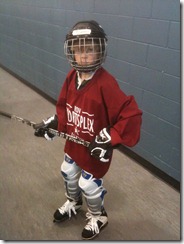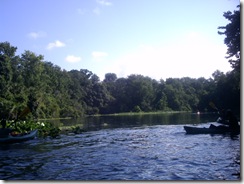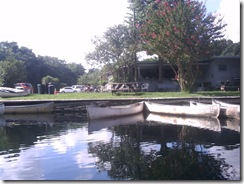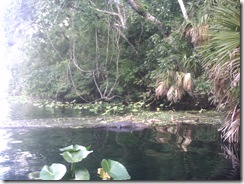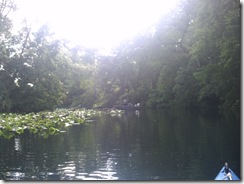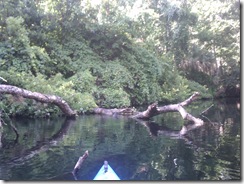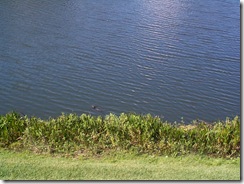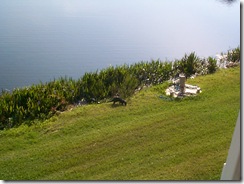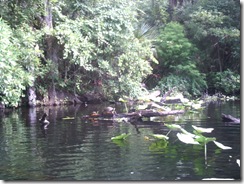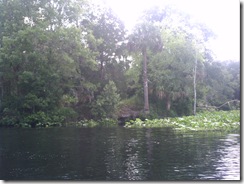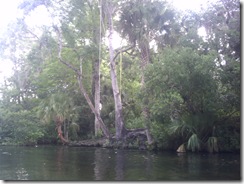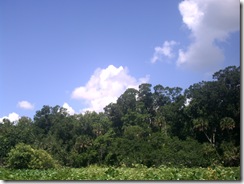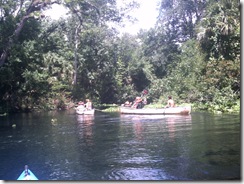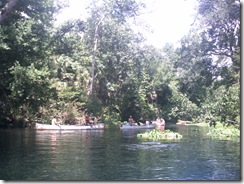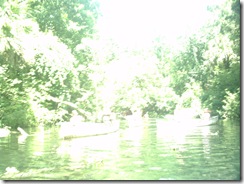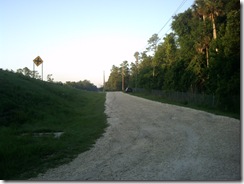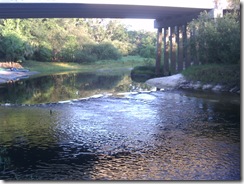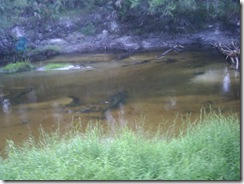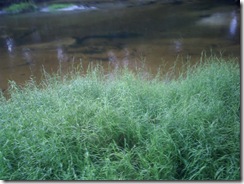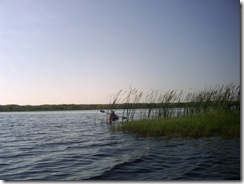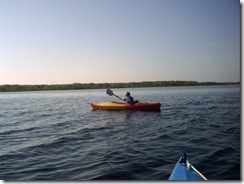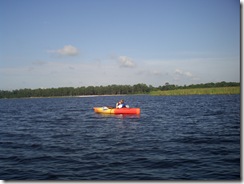Your cart is currently empty!
Author: sutherland
-
My First Skate and Shoot
So how, exactly, do we get from the boy-child’s skating lessons to me being on the ice in full hockey gear?
The progression of logic is as simple as it is horrifying:
- Boy-child needs ice time;
- Skate and shoot is recommended;
- I should be on the ice with him and should check it out beforehand;
- Although the rules say, as an adult, I only need a helmet and gloves, I realize I don’t bounce so good anymore;
See? I was clearly required to buy a full set of hockey gear today. There was no other logical option.
So me in a locker room – haven’t been in one since high school and didn’t like it much then. Putting on all this gear for the first time.
Yes, realizing there’s still a tag on the elbow pads and pulling it off quickly while hoping no one saw. Of course that had to happen …
Onto the ice and looking around because I have absolutely no idea how this works or what’s going to happen. Thankfully a few seconds of watching make it clear.
Nets at either end of the ice and one in the neutral zone against the boards between the two benches.
There’s a goaltender at one end with people taking shots and shots on the empty net at the other end, so it looks like center ice will be a fairly safe place for me to stay.
I grab a puck and set out to practice just being able to control it and skate at the same time – back and forth between the blue lines or cross ice. And I don’t think I do too badly. For the most part, I can keep it on my stick, even when I’m stopping and changing directions.
I pick up the pace, too, of both skating and stopping, and I’m pretty happy that I can mostly keep the puck with me when skating at a reasonable speed (for me, at least) and when reversing directions quickly.
When I get off the ice I realize something, though: forty-five minutes of skating is one thing – forty-five minutes of skating in twenty-five pounds of gear is quite another. I’m exhausted and sweating like a pig.
-
I got my hockey stop
Now I haven’t skated much over the years … maybe twice a year since 1995 or thereabouts, so I’m okay, but not great.
I can make it around the ice reasonably quickly, snowplow stop and if you watch long enough (or possibly use a time-lapse camera) you can see me making progress when I skate backwards. You have to pay attention, though, to the casual observer my backward skating looks remarkably like someone dancing the Twist.
But I have never been able to do a hockey stop.
I’ve tried, but mostly I just wind up turning or spinning in a circle.
Well, today I got it. Something clicked and I was able to start getting a feel for it early in the skating session. I was still mostly turning, but my outside skate was scraping more and slowing me more, then all of a sudden the turn went away completely and became an actual stop.
I can still only do it with my right foot – turning so my left foot is outermost feels incredibly awkward, but I can work on that.
So I spent most of the rest of the session at center ice skating a little between the cones:
Skate-skate-skate-stop, skate-skate-skate-stop, skate-skate-skate-stop.
I’m rather proud of myself, actually.
-
Boy-child: Lesson Three
Proper shin and elbow pads, plus a jersey one of the coaches gave him last week and T is starting to look like he means business.
At the public skate after class he keeps his shin pads on and starts going to his knees and sliding like they taught him in class today, but that’s not good in the crowds so I have to tell him to stop.
So now I have a dilemma. I want to get him more ice time so he can practice what he’s learning, but he can’t do those things in public skating. The staff recommends taking him to skate and shoots, but I’m a little wary of that. Those’re going to be full of people who already know how to play and he’s barely starting out.
-
Second skating lesson for the boy-child …
We arrive at the ice and I have him wearing his bicycle elbow and knee pads … I haven’t had time to find some for him and Play It Again Sports doesn’t have any used.
Well, he heads for the far end of the ice where the highest-level group is and I think, “uh, oh … he was only supposed to move up one level”.
Nope … I assumed that, but not so. They bumped him up to the highest level in the class.
-
The boy-child’s first lesson
In a new pair of gloves and used helmet and skates from Play It Again Sports, the boy-child takes the ice for his first learn-to-skate lesson.
To my eyes, he seems to be doing okay. Not falling down a lot or anything.
After the class, he tells me he’s getting moved up to another group. They’d split the class into four groups on day one, and T was in the second group. I figured, cool – he’s moving up a level.
I talk to the coach and she tells me he should have elbow pads, shin pads and a stick for that level.
Well, a couple sets of pads … not that big a deal …
-
Dementia has clearly set in …
Forty-two years old …
Largely sedentary for the last decade …
Never played organized sports in my life …
Raised in sunny Florida …
Obviously I’m the perfect candidate to start playing ice hockey.
No? Not obvious? So how did I get myself into this situation?
Born in Minnesota (okay, hockey-country). Never played, never went to a game, and moved to Florida when I was about six.
Florida was not hockey-country in the seventies and eighties. Far from it. Summered back in Minnesota, but not a lot of hockey in August even there.
I remember my grandfather took me to one hockey game when I was a kid. A USA-USSR exhibition match – but I didn’t really understand the game.
Then in 1995 Orlando got a professional hockey team, the Orlando Solar Bears. The guy I worked for at the time had season tickets and gave me a couple one day, so I went to a game.
I don’t remember who one or lost or even if a goal was scored on this play, but I remember seeing Mark Beaufait take the puck from one end of the ice to the other – around and between players from the other team like it had been choreographed.
In that one skate from end-to-end of the ice, he made me a hockey fan.
Within a month I had season tickets of my own and for a number of years rarely missed a game.
But I never considered playing … my ideas of sports for me were:
- Golf: Hit the ball, drive the cart, pay the drink girl;
- Bowling: Roll the ball, eat a cheeseburger and fries until it’s my turn again;
- Kayaking: Can be strenuous, but you get to do it sitting down;
Hockey looked like a lot of work for people a lot younger than me.
In 2001 I met my wife, who had two children at the time. I took the kids to games with me occasionally, until the season ended with the Solar Bears winning the Turner Cup and the IHL folding. No more hockey.
Another team, the Florida Seals, came to town, but problems with leagues and management and switching playing locations made it more difficult for me to get to their games.
The point of all this is to set my now eleven-year old son’s (I adopted my wife’s kids) exposure-level to hockey:
- Half a season of watching the Solar Bears when he was two;
- A few Seals games at three, four and five;
- Very few games on television;
So why, over the years, hasn’t he shut up about it?
He used to take a plastic stick and puck and skate around the kitchen in his socks “playing hockey”. Half a decade since he’s been to a game in person, and he still wants to play.
But we’re twenty miles from the nearest ice and hockey is not exactly a cheap sport – and the boy-child sometimes has issues following directions and following through on things, so I didn’t want to commit to the time and expense only to have him quit after a couple practices.
Well, earlier this year, my wife brought home a Try Hockey Free flyer from RDV. So, for free, I’ll take him to spend an hour on the ice.
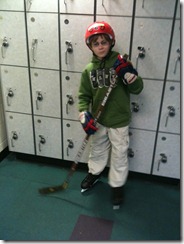 Equipped with rental skates, RDV-supplied stick and gloves, and his Spiderman bike helmet, he went onto the ice for an hour of drills … and damned if the little snot didn’t listen to the coaches, do what they told him to and get better at every drill. And he comes off the ice smiling and happy.
Equipped with rental skates, RDV-supplied stick and gloves, and his Spiderman bike helmet, he went onto the ice for an hour of drills … and damned if the little snot didn’t listen to the coaches, do what they told him to and get better at every drill. And he comes off the ice smiling and happy.I try to see if he’s serious. I tell him it’s hard work, it takes a lot of practice, he’ll have to do the same thing over and over again to get good at it (he hates that). He still loves it, he still wants to play.
So I sign him up for Learn to Skate: Beginner Hockey. All I need to get him for that is a pair of skates, a decent helmet and some gloves. If he doesn’t stick with it I won’t be out all that much money, right?
Learn to skate is about ten weeks – after that there’s a learn to play class he’ll have to take and I notice that there’s an adult learn to play class immediately thereafter.
In the misty, distant picture of the future I have, I think “that might be fun”, when he moves up to learn to play, I’ll take it too …
-
GiSTEQ PhotoTrackr Lite – A New Toy
Having been on vacation this last week not only gave me the chance to do some paddling, it also gave me the chance to try out a new toy.
When I started this blog, one of the things I wanted to do was to provide photos of the trips to Google Earth via Panoramio. One of the things I quickly found out was that mapping photos of a river trip by hand is a pain in a different body part.
Let’s face it, if you’ve just taken a picture here:
It’s pretty easy to tell Google Earth where you were when you snapped the photo.
On the other hand, the question "where was I standing when" becomes more problematic when it was somewhere in here:
I want to paddle, not keep track of river bends, so I went looking for something to do this automatically and found this little toy:
This is a simple GPS receiver that just records your location every 15-seconds when it’s turned on. Where this becomes useful for photography is when using the included PhotoTrackr software.
PhotoTrackr allows you to select a group of a pictures and a trip record from the GiSTEQ device. It then uses the time the picture was taken to match it up with a location in the trip record and encodes the location in the pictures’ EXIF information. Now, when you upload the picture to a service like Panoramio, Flickr or Picassa, those services can read the geotag information included with the picture and map it automatically.
In addition to mapping pictures, the PhotoTrackr software will also map your entire trip on Google Maps or export a KLM file for use with Google Earth — features I use to create the maps, route pictures and Google Earth downloads for this site.
Overall I’m pleased with the GiSTEQ device. The battery life could be better (1-AA runs it for about 10- to 12-hours) and there are short gaps in the recording. A single trip might be broken into several segments in the software and I’ve seen some gaps of up to a few hundred yards in the recording. I’m hoping a firmware update will resolve this once I have time to do the update.
I also had a problem with the install. It calls for getting a Google Map API Key (this would be the key the software uses to identify itself to Google Maps for displaying maps within the software). The install process sends you to the Google website to retrieve this key, but the site asks for a web address — the PhotoTrackr install doesn’t make it clear that it’s the GiSTEQ website you have to enter here (http://www.gisteq.com/). Once I found that tidbit on the GiSTEQ support forum, everything was fine.
-
Wekiva River
After nearly soiling myself passing a very large gator at close range on the Econlockhatchee, I decided something more leisurely and sedate was in order, so I headed for Wekiwa Springs State Park to paddle the Wekiva River.
The springs and the river actually do have different names, it isn’t an alternate spelling. Wekiwa refers to the springs — water coming out of the ground; while Wekiva means water flowing over the ground.
If you want a peaceful, tranquil Florida river experience, the Wekiva is a good choice … unless it’s a Saturday during Summer. Wekiwa Springs State Park frequently closes due to capacity being reached on Summer weekends and the river teems with boaters … most of them in rented canoes with no idea what they’re doing and less interest in the serenity of nature.
Near the headwaters of the Wekiva you have a choice of putting in at either the State Park or Wekiva Marina (about a mile downstream from the springs).
I chose the State Park because the fee to put in is a couple dollars less. If you put in at the Marina and then want to paddle to the Park, there’s a small fee to enter the Park as well.
One issue with launching your own boat from the State Park is that the water is some distance from the parking. There’s also a hill involved and the trail is rather soft sand in some places. It’s not that bad getting to the water, since it’s downhill from the parking lot … the bad part comes later.
The put-in is on the Wekiwa Springs pond, just below the swimming area.
Since my little misadventure on the Econ had eaten up some of my time this morning (and thankfully that was all that was eaten), it was after 9:00 AM when I got to the springs and people were already on the water. It was still early enough, though to get a bit of mist and early morning sunshine through the trees.
About 3/4 of a mile from the springs, Rock Springs Run joins the Wekiva. This is a smaller, less-traveled tributary that I enjoy paddling and I started up it a bit before returning to the Wekiva.
A full mile from the State Park is Wekiva Marina, where you can also put in or rent a canoe.
Shortly past the marina, I came across a small alligator — a much more pleasant encounter than the one earlier in the day. In fact, on most trips down the Wekiva I’ve encountered a small gator in this area, just downstream of the marina.
It’s at this point in writing this blog entry that I come to the realization that the little Argus Bean camera I got for these trips just isn’t going to do it for me. Most of the pictures I took on this trip didn’t come out well, so I’m going to have to try something better.
After pointing out the little gator to the next group of paddlers coming down the river, I leave him behind and encounter a new form of wildlife — kayaker without PFD:
If you look closely, you can see her head behind the nice Fish and Game officer’s boat … her head’s right next to the officer’s ticket book, which she got a very good look at.
Is it really such a hardship to have a PFD in the boat?
Past the legal action, I saw bubbles start to break the surface of the water near the shore, then a stream of bubbles race across the width of the river. A line of bubbles breaking the surface usually means an otter and a bit of patience tracked him down when he surfaced near a fallen tree to munch on a fish.
I love watching otters and had the good fortune to once rent an apartment that had been built around a natural pond that acquired a family of them. For several months I was able to watch them from the comfort of my balcony:
After passing the otters, I saw some turtles on a log:
This is the obligatory, Florida, Turtle on a Log picture. I do not plan to take or post any more pictures of Turtle on a Log, no matter what river I see them on.
Now, don’t get me wrong, I like seeing Turtles on a Log — no matter how many times I see them, it’s a nice reminder that I’m on the water, away from the city. But, let’s face it, there’re a lot of Turtles on a Log. And anyone who paddles, especially in Florida, has seen more than their share already, so pictures of them aren’t really necessary.
So, from time to time, if I feel it’s useful for the ambiance of the trip report, I’ll just throw in:
You’ll know what I mean and it’ll save everyone’s time and Internet bandwidth. If you truly feel compelled to see another picture of Turtle on a Log, you can click the link and come right back here to one.
Of course, I’ll still take and post a picture if I feel it’s noteworthy, for instance if I see Unusually Large Turtle on a Log or Very Large Number of Turtles on a Log. Definitely if I see the very rare: Log With No Turtle.
I started paddling again …
(see how nicely that works?)
About 1/2 a mile downstream of the marina, the river appears to split around an island you can recognize by the lone palm tree next to a bare bank:
The left channel is the main, navigable river, but the island is a frequent stop to rest and relax. Farther along its shore are several rope swings and later in the day this spot will be packed with people picnicking and playing in the water.
The rest of my paddle down river is mostly uneventful …
<Turtle on a Log>
<Turtle on a Log>
<Turtle on a Log>… though I do get my best quality pictures of the day out of the Argus Bean when I come to an open area of the river and want to capture the beautiful sky I’m paddling under:
After a couple hours of paddling …
<Turtle on a Log> ^ 10
I do encounter some very tolerant birds that let me get quite close for a picture. These are without any zoom:
Once back between the marina and the park, I once again encounter the large crowds on the river this summer weekend. The attendant at the springs put-in told me they had eighty boats on the water — possibly an exaggeration.
One day, I’m going to come here and just paddle the mile between the park and marina, back and forth, all day, watching the people in the rented canoes. Some know what they’re doing, but for others it’s a crap-shoot whether they’ll make it off the river alive.
Best quote of the day (from a wife in the front of a canoe with a paddle across her lap):
"You’re heading right for another tree!"
The tree in question was at least fifty feet away and the look on the husband’s face was priceless.
My favorite was this lady. She has three kids with her in two canoes. She has tied the canoes together and is the only one paddling — the kids mostly just sit there with their paddles. Here she is crossing the river in front of me:
Now, here she is crossing the river back the other way:
And back:
Here the Bean failed me again, but she’s recrossing the river right in front of another canoe (keep in mind her two are tied together and the oncoming canoe has the current behind it). I’m cringing at this point, waiting for the clothesline flag to be thrown and ready to assist the soon-to-be victims.
Luckily, the oncoming paddler was able to slow down enough to avoid disaster.
Once back at the State Park put-in, the truly horrid part of the trip is facing me: getting the boat back to the car.
After trudging up the hill to retrieve the kayak cart from the car and back down to the put-in, I make sure everything’s secure on the boat and start the trek … uphill … through the soft, soft sand.
At the top of the initial hill, there’s a choice to be made. I can turn right past the concession stand and then up the narrower, steeper trail to where I parked, or I can go left through a picnic area — that way is longer, but not as steep.
I’m 41-years old, out of shape and need the exercise, I take the hill. Besides, they’re grilling in the picnic area, I can smell it. I’m hungry after the morning’s paddling and the turkey sandwiches waiting in my cooler just aren’t what I want. If I have to drag this damn boat past burgers and barbeque, there’s going to be an Incident.
So up the hill. But not all at once. The goal is to get the heart pumping, not exploding.
First, the short pull across level ground to the restrooms, which is an excellent excuse to stop for a moment. Then start up the hill to the gate and pause again, looking longingly back at the hot dog cart outside the park’s concession. If they were grilled, I’d be all over it, but they’re boiled and even the turkey in the cooler’s more appetizing than that.
Now up the hill to the halfway point, where I wheeze for a little while, muttering about how if I’d taken the other path I’d be eating a burger right now while fending off its owner with a BBQ fork.
And one final pull to the parking lot where I load up the car and settle in to the air conditioning to eat my turkey sandwich. Yum.
-
Econlockhatchee River (lower) — Failed Trip
The Econ has not been kind to me this week. After failing earlier in an attempt to paddle the upper stretch, I returned this morning for the lower segment, which is 11-miles and runs from Snow Hill Road to State Road 46, a short ways down the St. Johns River from where the Econ flows into it.
The put-in at Snow Hill Road is very nice, with gravel entries on either side of the road and under the bridge.
Despite some rain during the week, the water level was still very low when I arrived, so low that the little dam under the bridge was visible.
Water level and debris had been the problem when I tried to paddle the upper segment, but I decided to try anyway. The current water level had been okay for paddling the middle segment that runs through the Little Big Econ State Forest, so I figured it was worth a try.
Because the shore of the put-in below the little dam is mostly rock and concrete for erosion control, I put in above the dam and "shot the rapids" — this is Florida, we take what we can get.
Shortly after taking off, only a few minutes down river, I come to a tree mostly blocking the way, but it’s been down a while and previous paddlers have cleared some of it near the left bank and there’s about six or eight feet of clear water on that side.
As I get closer, I see that there’s a stump dead center of this cleared space and it looks over a foot across, so I start pondering how to get by it; is my better track going to be on the left near shore or on the right toward open water? With the current pushing me toward the gap, I look down river to see what’s next and choose my line … then I notice something and have a new thing to ponder:
Why does a stump need eyes?
This is, indeed, a riddle … a quandary, even, that I puzzle over as the stump slowly sinks out of sight.
I stop paddling as the current takes me through the gap and I look down.
Under two, maybe three, feet of tea-colored water, half a paddle-length from the edge of my boat, is an eat-me category alligator. (Actually, from my perspective at the time, he looks more like he’s in the Betty White’s Cow category.)
He’s not as big as my boat, a 16.5′ Tarpon, but he’s bigger than most of my boat, so my heart’s racing a bit.
Now, intellectually, I know that he doesn’t want to hurt me and the reason he’s down on the bottom is so I won’t see him and will leave him alone. I know this … but fresh in my mind at the time is this message from over on the Green Wave about a gator surfacing and putting four holes in the bow of 14.5′ Perception at Alexander Springs.
I’m sure the gator in that incident wasn’t looking to hurt anyone, he just got startled and wanted to get away, so he lashed out at what he thought was the threat and then retreated.
So here I am floating by my gator today, trying ever so hard not to appear threatening (or tasty). In fact, I’m thinking to myself: "Hello, Mr. Alligator — this is just a big, blue log floating innocently down the river; soon it will be gone and you can go on about your business. Pay no attention to that mammal on top of the log, he tastes bad and is high in cholesterol."
Once past, I breathe a sigh of relief and round the next bend, glad to put him behind me. As I round the bend, I startle a deer drinking at the shoreline. She stares at me for a split-second, then bounds off into the brush. And it’s at this point that I remember I have a camera, so I head for the beach where the deer was drinking, tie up my kayak and walk back along the shoreline (keeping some distance from the actual water) until I find the alligator again — he’d drifted a bit downstream from where I first saw him. He’s still submerged, but is visible in the pictures:
As I get back in the boat and start paddling again, I begin to think:
Narrow river + shallow water + large alligators + solo paddler = ?
What do these things add up to? Stupid people doing stupid things.
See, I have no doubt at all that I’ve been on the water with gators that big before … many times. I’ve probably paddled right over them. The difference here is that the water’s not deep enough and the river’s not wide enough for the gator to get far enough from me for him to feel safe … and that’s when he’s going to hurt me, when he thinks I’m a threat and he can’t get away.
I’m barely into this trip and I’m thinking about another eleven miles of narrow, shallow water … what’s the likelihood in these conditions that I’ll be paddling hard and deep to get around some obstruction and whack one of these guys in the head with my paddle? Or that I’ll be unable to see below the surface ahead of me due to the sun’s glare and wind up running into one? Do I like these odds?
So, since one of my life-goals is to not be the guy on the six o’clock news story that everyone else in town shakes their head and mutters "dumb ass" about, I decide this isn’t the right time to take this trip. On another day, when there’s more water and maybe another paddler, I’ll be back.
At the time, though, I have another problem. Ahead of me is eleven miles of shallow, narrow water with an unknown number of large alligators … behind me might only be a few hundred yards of paddling, but I know exactly what’s in the very shallow, very narrow river.
I start paddling back, keeping a watchful eye out … no gator. I pull onto the bank a couple times so I can walk ahead and scout the water … no gator. I get past the area that I first saw him in … no gator. I get to within view of the dam … no gator. I get through the gap in the dam, under the Snow Hill Road bridge and up to the beach … no gator.
So the question in my mind for the rest of the day: I didn’t see him, so how close to the bottom of my boat was he when I went right over him?
-
The Boy-Child’s First Solo
There’s an old Styx song I’ve been humming a lot this week:
Nothing ever goes as planned …
It’s a hell of a notion …I’m on vacation this week and had “plans” — the plans were to paddle every morning, do several hours of paddling on different routes and be off the water by mid-day to spend time with my family. But, as I keep telling my kids when they whine “But you said we were going to …”, plans change.
Errands, a dog needing to go to the vet and a couple late nights have all conspired to make me skip getting on the water several days.
Now, all week long, the boy-child’s been saying that he wants to go kayaking with me and I’ve been putting him off. Because I’ve paddled so little over the last few years, I’ve become a bit jealous of my time on the water. Taking one of the kids means changing the trip to accommodate them — and I had “plans” for this week.
Taking T. has always meant paddling the tandem Pamlico, which I’m not entirely happy with, and keeping the trip short enough so he doesn’t get bored. At nine, hours and hours on a river just doesn’t keep him entertained.
But kitten‘s been reminding me of some things lately (it’s not nagging when it’s the right thing to do), and that’d been percolating through my brain all night, so when the Big Bad Wolf …
… stepped on my gut at dawn to say “Morning! Morning! Morning! Time to do things!” … plans changed.
I still don’t like paddling the Pamlico, though, so I decided it was time for T. to try paddling himself. We loaded up the the Tarpon and my daughter’s Swifty to head for Moss Park where I’d paddled just a couple days before.
Earlier in the week I’d paddled Lake Hart, on the West side of Moss Park, but that route starts with a 1/2-mile trip down a relatively narrow (20- or 30-foot wide) channel. I figured that would be a bit much to ask of the boy his first time alone in a kayak, so we paddled the Lake Mary Jane side of the park.
 (view this location in Google Earth)
(view this location in Google Earth)
(get Google Earth)This side of the park has a nice sand beach and swimming area, as well as a grass launching area suitable for kayaks. Just off the beach is an island that’s designated as a bird sanctuary. We put in from this area and started paddling.
I’d almost expected T. to be a bit hesitant about paddling himself, but he took right off, clearing the reeds around the put-in before I was fully in my boat:
I was really impressed by how well he did right from the start. His stroke needs work (so does mine) and his tracking is … creative (I think he paddled two or three feet for every one I did today), but he took to it quickly.
I let him set the pace and direction for a bit, then suggested he head across the lake toward the nearest boathouse we could see. I expected him to tire out and want to turn back before making it, but he kept going and we made it to the target.
The distance to the boathouse from the put-in is about half a mile, but as I said, his paddling paths are interesting, so he probably paddled a full mile on the way over.
Once there, we took a brief rest and he was ready to paddle farther, not the least intimidated by the view back to the beach we’d set off from:
He has a tendency to paddle harder than he needs to, though, so I didn’t want to chance him tiring out and needing a tow back. We drifted for a bit, talking about paddling and then headed back in.
Once everything but the Swifty was back in or on the car, we took the it over to the swimming area. If he’s going to paddle his own boat, he needs to have some knowledge and be prepared, so I stood in waist-deep water with him in the boat and explained some things like primary and secondary stability. Then I tilted the boat so he could get a feel for it and finally I dumped him over a few time so he could practice a wet exit.
Okay, so he’s so short that a wet exit for him mostly consists of falling out of the cockpit as the boat goes over and this was more of an excuse to dump him in the water a few times, but it did give him a feel for it so he won’t freak out if it ever happens.
He also practiced getting back into the boat after going over and saw how, even full of water, the flotation bags keep it at the surface. And how much water he’d have to bail out if he ever went over in the middle of a lake somewhere.
Next time, we’ll work on keeping control of paddle and kayak when going over. This is also an area I neglected with the girl-child, when she started paddling, so I should work on this with her, too.
Isn’t it great when a legitimate safety exercise gives you an excuse to half-drown your children?
